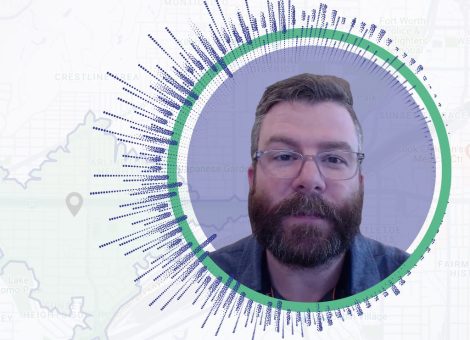Fuel network planning
When you’re assessing new sites, upgrading locations, or optimizing your network, it’s critical to understand the factors that contribute to performance.

Strategic insight to master your fuel market
Today, there are more data and sophisticated modeling methods than ever to inform the fuel network planning process. Relying on gut feel is no longer an option. The insight and tools are available to remove the guesswork and add certainty to your decisions.

Assessing locations and understanding potential
Opening new gas stations – whether through green-field development or acquisition – is expensive, so it’s critical that teams making capital investment decisions are equipped with the right capabilities in order to:
- Project demand to understand which sites are likely to deliver the best return
- Benchmark against your existing sites and your competitors’ to spot untapped potential
- Simulate how changes in population, and new housing or retail developments could impact demand
For many years, fuel network planners relied on ‘gut feel’ to validate their decisions. Today, advanced scientific modeling can provide certainty that your strategy is the right fit for your brand and your market.
Opening new gas stations – whether through green-field development or acquisition – is expensive, so it’s critical that teams making capital investment decisions are equipped with the right capabilities in order to:
- Project demand to understand which sites are likely to deliver the best return
- Benchmark against your existing sites and your competitors’ to spot untapped potential
- Simulate how changes in population, and new housing or retail developments could impact demand
For many years, fuel network planners relied on ‘gut feel’ to validate their decisions. Today, advanced scientific modeling can provide certainty that your strategy is the right fit for your brand and your market.

Optimizing a fuel network to maximize profitability
The myriad of factors impacting performance makes optimization a challenging part of any fuel network planner’s role. The best practice approach to network planning includes the ability to:
- Identify underperforming sites and the factors holding back their performance
- Simulate the effect of site upgrades, such as adding more pumps, QSR, or enhancing your convenience offering
- Model network rationalization to understand the impact of closing sites and the volume your remaining locations can expect to acquire
Robust strategic planning ensures both site level and portfolio level decisions are correct for your markets as they are today, and how they will be long into the future.
The myriad of factors impacting performance makes optimization a challenging part of any fuel network planner’s role. The best practice approach to network planning includes the ability to:
- Identify underperforming sites and the factors holding back their performance
- Simulate the effect of site upgrades, such as adding more pumps, QSR, or enhancing your convenience offering
- Model network rationalization to understand the impact of closing sites and the volume your remaining locations can expect to acquire
Robust strategic planning ensures both site level and portfolio level decisions are correct for your markets as they are today, and how they will be long into the future.

Assessing acquisitions to validate capital investment
With much consolidation and divestment among larger portfolios in recent years, there’s been a raft of acquisition opportunities for network planners to evaluate.
- Understand how acquisitions align to your strategic investment area, considering supply and distribution costs
- Spot potential underperformers that could deliver higher volumes and revenue with capital investment or reconfiguration
- Model cannibalization and how your existing sites would be impacted, and how adding new sites to a portfolio would impact network performance overall
Acquisitions represent a fast way to extend reach in a new market, grow efficiencies in existing markets, as well as add revenue. It’s critical to understand how an acquisition complements your current portfolio as part of your wider planning strategy.
With much consolidation and divestment among larger portfolios in recent years, there’s been a raft of acquisition opportunities for network planners to evaluate.
- Understand how acquisitions align to your strategic investment area, considering supply and distribution costs
- Spot potential underperformers that could deliver higher volumes and revenue with capital investment or reconfiguration
- Model cannibalization and how your existing sites would be impacted, and how adding new sites to a portfolio would impact network performance overall
Acquisitions represent a fast way to extend reach in a new market, grow efficiencies in existing markets, as well as add revenue. It’s critical to understand how an acquisition complements your current portfolio as part of your wider planning strategy.
Kalibrate’s approach to data sets us apart. We combine and validate our own site survey data, granular traffic and demographic information and your own data to build a rich database of your market area.
- Site attributes — Targeted data collection specific to a site’s characteristics and offerings. 100+ datapoints specific to fuel, c-store, quick service restaurant, EV, sales, and volume performance
- Traffic — Proprietary global traffic database. Traffic data is enriched through road network data, congestion metrics, and sophisticated modeling
- Demographics — Basic and advanced demographic datasets including household and population density, number of vehicles, and average income. Customer segmentation and other advanced demographic datasets are available
Our modelling is future proofed such that it’s allows us to incorporate new modeling techniques as they become available, to ensure the highest level of accuracy is maintained as market and data evolves
- Kalibrate uses sophisticated AI/machine learning driven science to select the best fit algorithms for a selected market, product and data set
- The application of AI/Machine learning allows for quicker turnaround of new models with varying data inputs
- Varying data inputs allows Kalibrate to have more flexibility around both site attribute and demand data included in the model. The means clients can make the strategic decision of what data to use in which markets
Extensive experience in fuel planning
Many members of our product development and customer success teams previously worked client-side in fuel planning roles, making strategic location decisions every day.
Working globally
Working in over 70 countries across the world, our team have extensive experience in markets at all levels of maturity and development.
Ready to make better fuel network decisions today?
Related resources
Location intelligence
Can you conduct a whitespace analysis?
The ability to identify new opportunities is vital when creating a successful real estate strategy. Whitespace...

Location intelligence
Meet Robert, Kalibrate's Regional VP of Sales
"I enjoy the continuous learning that comes with my role—every client brings a unique set of challenges and...

